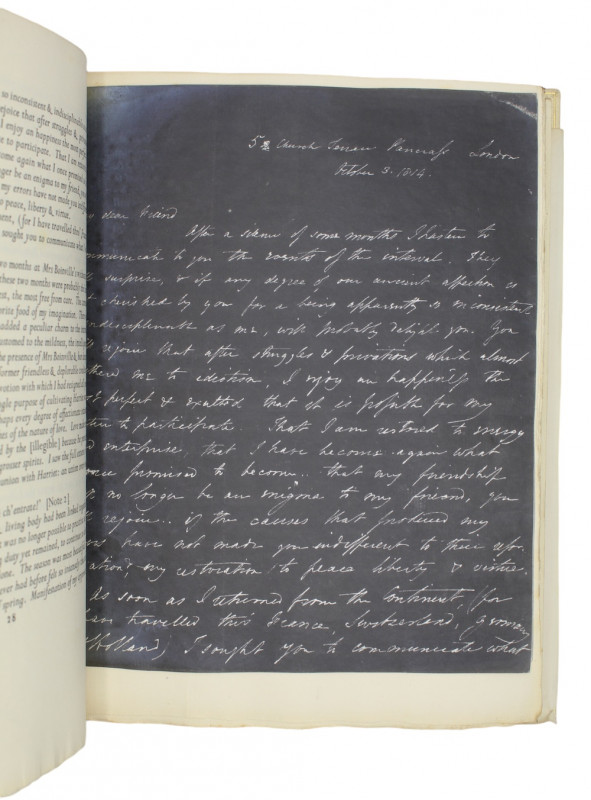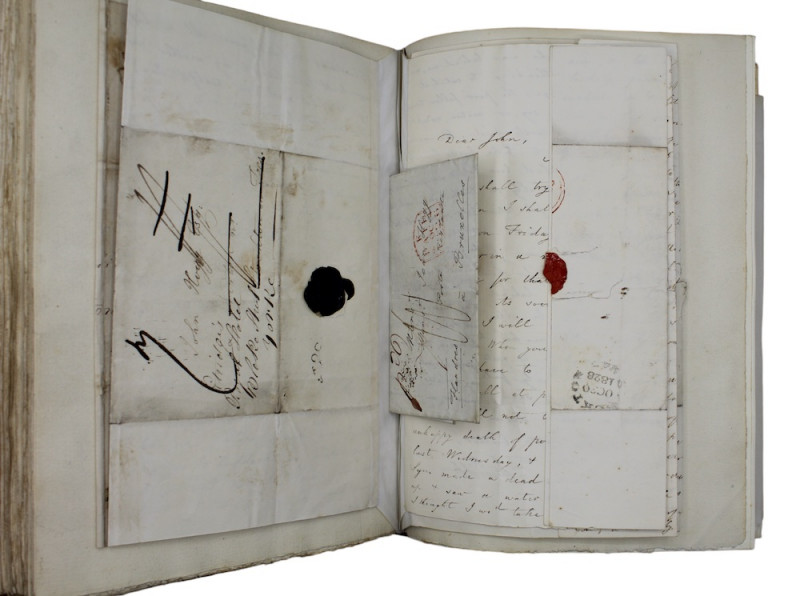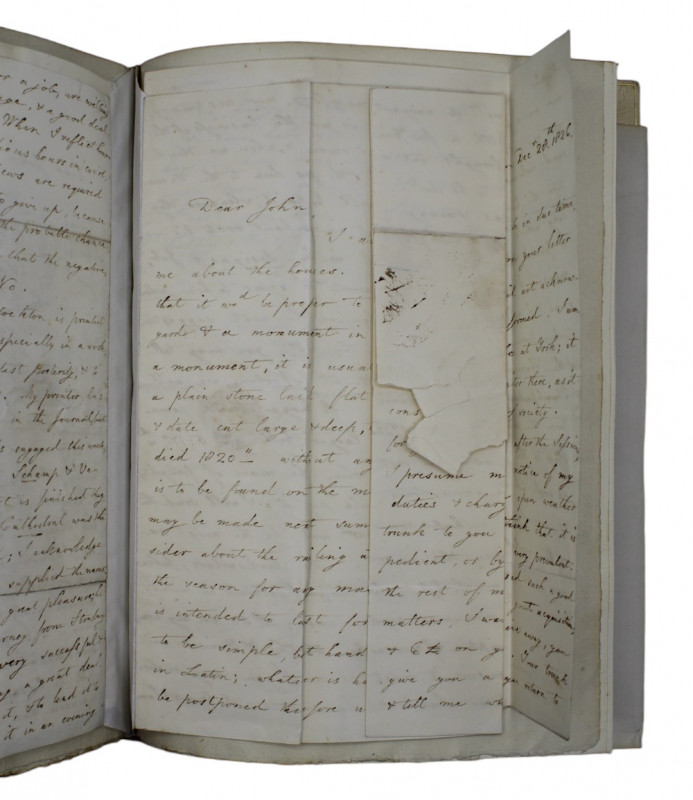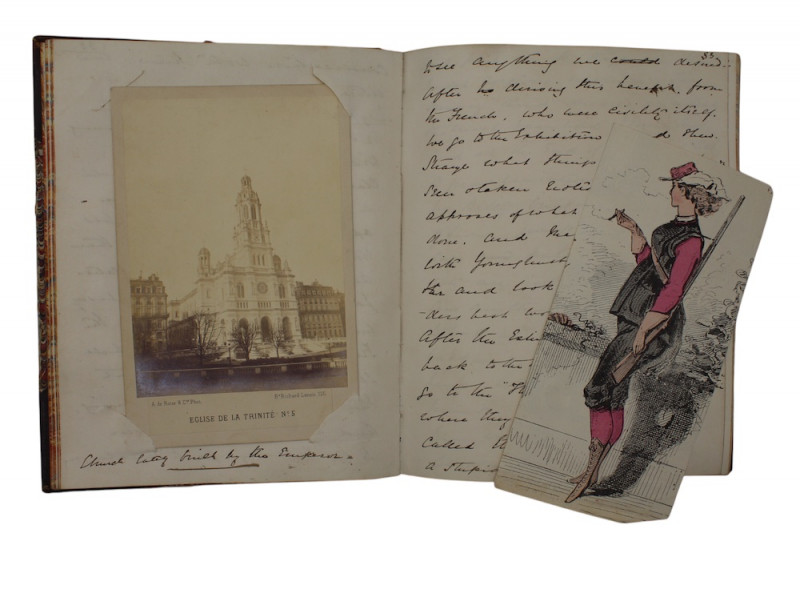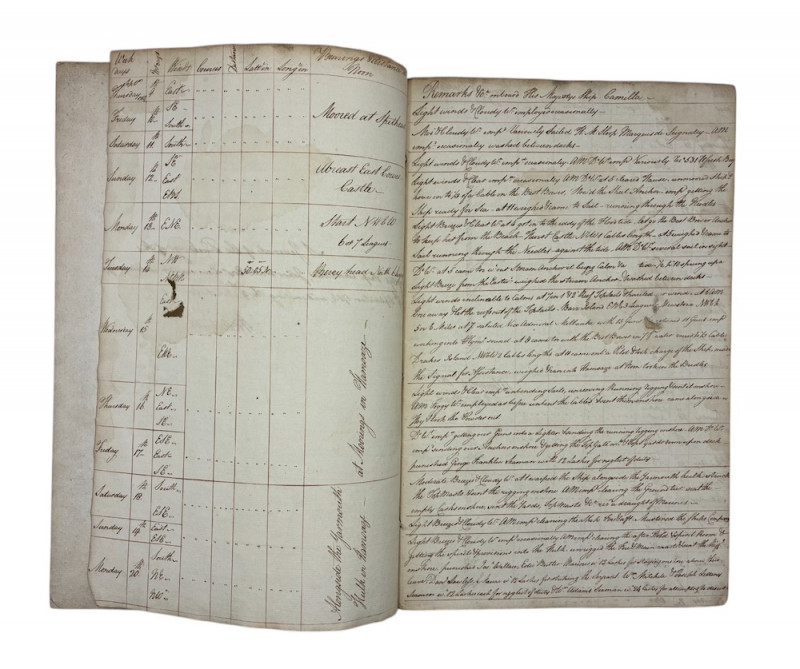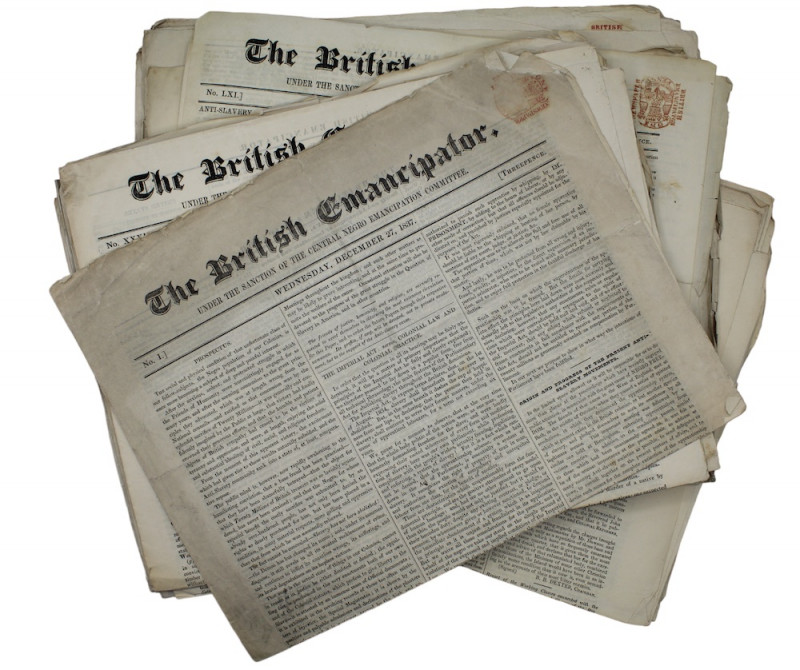The athenians being correspondence between thomas jefferson hogg and his friends thomas love peacock, leigh hunt, percy bysshe shelley, and others.
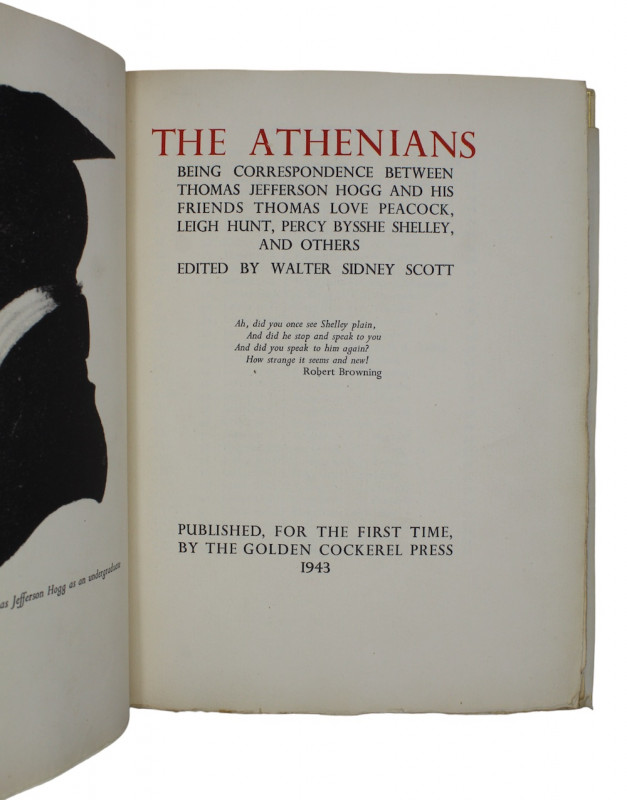
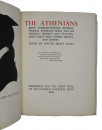


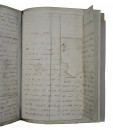
Book Description
Quarto. 86pp, [6]. Frontispiece portrait (included in the collation) of T.J. Hogg in Silhouette. With two terminal leaves of printed facsimiles, colophon, and extra inserted material as follows: One collotype facsimile, on three leaves, of an A.L.S. from Shelley to Hogg dated October 3 1814, the text of which is printed in this work, in which he describes meeting and falling for Mary Godwin; a CDV, according to the pencilled note to verso, of Miss H (Deutia), alongside and A.L.S. to 'Cousin John' signed Deutia Lonsdale, each mounted.
[Bound with:] Harriet & Mary being the relations between percy bysshe shelley, harriet shelley, mary shelley, and thomas jefferson hogg as shown in letters between them now published for the first time. [London]. The Golden Cockerel Press, 1944. 84pp. Frontispiece portrait (included in the collation) of Shelley. Extra inserted material as follows: 12 collotype facsimiles, on various leaves and sometimes duplicated in different formats, of autograph letters between Shelley, Mary Shelley and T.J. Hogg, the text of which are printed in this work.
[And:] Shelley at Oxford the early correspondence of P.B. Shelley with his friend T.J. Hogg together with letters of mary shelley and t.l. peacock and a hitherto unpublished prose fragment by shelley. [London]. The Golden Cockerel Press, 1944. 79pp. [1]. Frontispiece portrait (included in the collation) of Antonio Leisman, further portrait of T.J. Hogg, and with extra inserted material as follows: collotype portrait of Antonio Leisman (reproducing the image used as the frontispiece), six collotype facsimiles, on various numbers of leaves, of autograph letters printed in this work, two engraved prints of The Town Hall in Oxford, one monochrome, the other hand- coloured and the four leaf 'Supplement of Reproductions limited to fifty copies' reproducing the image of the town hall and three further prints.'
Mounted at the end of this work are six original entire A.L.S. from Thomas Jefferson Hogg to his brother John (dated 1824, 1826 (4), and 1860), and one part A.L. (1826) each on a stub.
Three works bound together as one, lettered to spine 'Author's Proof Copy' and 'Extra Illustrated', with occasional pencilled evidence of proofing to text. Twentieth-century gilt-tooled cream morocco, contrasting morocco lettering-pieces, buckram slipcase, by Sangorski and Sutcliffe. Browning to spine and a little marking to the boards, else fine.
In addition to the numerous extra illustrations noted above, loosely inserted are three further CDVs (including the silhouette from which the portrait frontispiece of T.J. Hogg is taken), an engraved bookplate of 'John Hogg, Lincolns Inn', a woodcut view of Carfax Church, a further collotype of the portrait of Antonio Leisman.
The author's own proof copy, specially bound and extensively extra-illustrated, of the three volumes of correspondence between Shelley and his friend and biographer Thomas Jefferson Hogg (1792-1862), edited by literary scholar Walter Sidney Scott from published sources and a 'few, which have lain concealed in a bundle of miscellaneous papers just as Hogg left them at the time of his death' in the possession of his brother-in-law 'Captain R. Jefferson...owner of the original letters'.
Published (to a remarkably high standard) by the Golden Cockerel Press during the Second World War, they were printed with perpetua type, on Arnold's mould-made paper, and produced in two separate editions. These proofs were clearly intended as representative examples of the strictly limited editions (50 copies each) of the three volumes, which contained extra collotype reproductions of letters by T.J. Hogg, P.B. Shelley, T.L. Peacock and Leigh Hunt not present in the editions of 500. In some cases both negative and positive versions of the collotypes are present; presumably to allow selection.
The production of the work aside, the highlight of the extra illustrations in this set are seven original autograph letters, signed, from Thomas Jefferson Hogg to his brother the classical scholar and naturalist John Hogg (1800-1869), which have been expertly mounted at the end of this volume.
These letters are chatty and affectionately familiar, and generally concern domestic, financial and estate matters, but with occasional details of the author's publications and reading matter. All dating from after Shelley's death, which caused Hogg considerable mental grief, the majority were written in the autumn of 1826, when John Hogg was completing a tour of Europe which clearly made his elder brother, then resident at Norton in Durham, somewhat jealous. That said, he was able to impart travel tips to John from there in his letter of October 1 1826, noting his own regret at not visiting the 'Triangular Island' of Sicily despite being 'greatly tempted' to have visited when at Naples, and suggesting that his younger brother should 'call upon a friend & travelling companion of mine, Professor Raussmann, a truly learned & most kind hearted German'. In noting that John's 'journal I suppose is nearly as long as the Cyclopaedia of Dr. Rees', Thomas notes that part of his own 'has been published in the London Magazine', and that 'they are now printing it, in a pocket size & as a separate work entire, for the use of travellers, it will be published about the time of your return'. This must be a reference to his Two Hundred and Nine Days (London, 1827), an account of his second European tour made in late 1825 and early 1826, at the insistence of his later common-law wife, and previously the last of Shelley's women, Jane Williams.
Just one of the letters dates from after the appearance of the first two volumes of Hogg's unreliable biography of his intimate friend Shelley, the publication of led to the poet's family denying Hogg further access to the material he would need to complete it, resulting in the final two planned volumes remaining incomplete and, thanks to injunction from Sir Percy unpublished. Dated July 27 1860, and sent from his final home at 33 Clifton Road, St. John's Wood, Thomas is 'much obliged to Sarah for her script', promising to 'write to her soon'; presumably the discussion of a work by John's wife, which is followed by the elder brother admitting to having 'read The Mill on the Floss', noting that 'Miss Evans got four thousand pounds for it; a large prize indeed, even Sir Walter Scott never had more than three thousand for a novel!'.
No complete edition of the correspondence of T.J. Hogg has ever been produced; collections of his correspondence are held, inter alia, at the NYPL, amongst other documents and writings, in the Pforzheimer Collection; and at Oxford.
Author
[SHELLEY, Percy B.] SCOTT, Walter Sidney.
Date
1943
Publisher
[London]. The Golden Cockerel Press
Friends of the PBFA
For £10 get free entry to our fairs, updates from the PBFA and more.
Please email info@pbfa.org for more information
